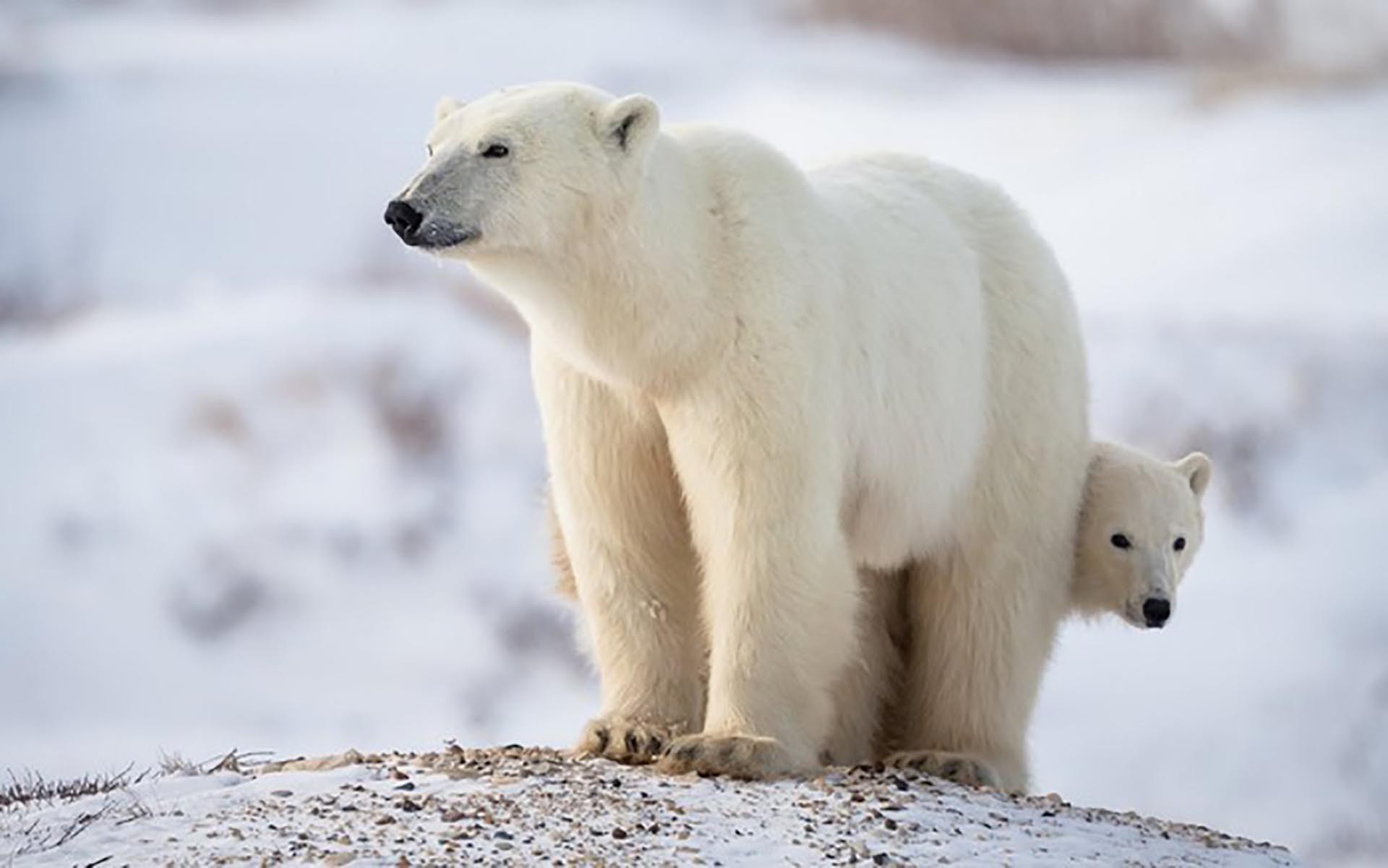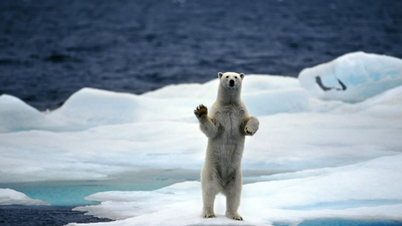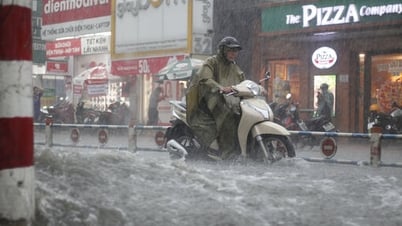Scientists have for the first time found a link between greenhouse gas emissions and the reproductive and survival rates of polar bears, putting the species on red alert for possible extinction.
 |
| Polar bears are at risk of extinction due to greenhouse gas emissions and climate change. (Illustration photo. Source: CNN) |
In a new study published on September 14 in the journal Science, the conservation organization Polar Bears International said that polar bears live in 19 populations across the Arctic and in Canada, the United States, Russia, Greenland and Norway.
According to scientist Steven Amstrup, co-author of the study, climate change caused by human greenhouse gas emissions is accelerating the melting of sea ice.
Polar bears are facing longer fasting periods as sea ice shrinks rapidly, leaving them with fewer places to feed.
Some polar bear populations are forced to go day after day without food. Their reduced body weight reduces their chances of surviving the winter, leading to a decline in bear numbers.
The Bears Are Emaciated
Polar bears have been listed as “threatened” due to climate warming, under the criteria of the US Endangered Species Act, enacted in 2008.
Researchers from Polar Bears International, the University of Washington and the University of Wyoming (USA) quantified the relationship between the number of ice-free days that polar bear populations endure and the level of pollution caused by a warming planet, corresponding to the survival rate of bears in some populations. The study data recorded that polar bears have experienced ice-free seasons since 1979.
They found that the number of days polar bears were forced to fast increased as greenhouse gas emissions increased. For example, polar bears in the Chukchi Sea of the Arctic Ocean were forced to fast for about 12 days in 1979. That number increased to about 137 days in 2020.
The number of days a bear can survive without food varies depending on the region and the animal's condition, but the more days it spends without ice, the more its reproductive ability and survival decline.
“We can link these emissions to the warming of the climate and subsequent loss of sea ice in the Arctic in recent years,” said study co-author Cecilia Bitz, a professor of atmospheric sciences at the University of Washington. In addition, the survival of polar bears is directly linked to greenhouse gas emissions, not just sea ice.
Twelve of the 13 bear populations have declined dramatically in recent decades due to climate change in the Arctic, which is warming twice as fast as the global average.
“By 2100, there may be no more babies,” Amstrup warned, a scenario where the planet’s average surface temperature has risen by 3.3 degrees Celsius compared to pre-industrial times.
The only way to save this largest land carnivore from the brink of extinction is to protect its habitat, by preventing global warming.
El Nino concerns
The risk of extinction of the polar bear, the largest terrestrial carnivore, has been identified as a negative impact of climate change, further compounded by the El Nino weather phenomenon, which is forecast to continue until 2024.
El Nino is an abnormal warming of the surface water layer in the central and eastern equatorial Pacific Ocean, lasting from 8-12 months or longer, usually occurring every 3-4 years, sometimes more frequently. El Nino causes abnormal weather and increased temperatures.
The shift from a cooler La Niña pattern to a warmer El Niño phase can cause chaos, especially in today’s fast-growing emerging economies. Power grids are overloaded and blackouts become more frequent. Extreme heat increases emergency room visits, while droughts increase the risk of fires. Crop failures, flooding and the destruction of homes follow.
During El Nino, winters typically bring less rain and snow in the northern United States and Canada, adding to concerns about drought plaguing the region.
According to Ms. Katharine Hayhoe, chief scientist at the environmental organization The Nature Conservancy in Virginia (USA), when El Nino occurs simultaneously with the long-term warming trend of the Earth's climate, it is like a double blow.
The tropics and the southern hemisphere are the regions most at risk, according to Bloomberg Economics’ model. El Nino could shave nearly half a percentage point off annual GDP growth in India and Argentina, while Australia, Peru and the Philippines could see a 0.3 percentage point hit.
Scientists at Dartmouth University (USA) predict that economic damage caused by El Nino will reach 84 trillion USD by the end of this century.
In China last summer, high temperatures killed livestock and put pressure on the country's power grid.
Meanwhile, in Southeast Asia, drought has exacerbated the annual haze that gathers over Singapore as farmers in neighboring countries burn forests to plant palm oil, rubber and pulpwood.
According to the National Center for Hydro-Meteorological Forecasting, for Vietnam, El Nino often causes a rainfall deficit in most areas of the country with a common level of 25-50%. Therefore, there is a high risk of local or widespread drought in areas with high water demand for production and daily life during the dry months of 2023.
Source




![[Photo] General Secretary To Lam begins official visit to Russia and attends the 80th Anniversary of Victory over Fascism](https://vphoto.vietnam.vn/thumb/1200x675/vietnam/resource/IMAGE/2025/5/8/5d2566d7f67d4a1e9b88bc677831ec9d)
![[Photo] Prime Minister Pham Minh Chinh meets with the Policy Advisory Council on Private Economic Development](https://vphoto.vietnam.vn/thumb/1200x675/vietnam/resource/IMAGE/2025/5/8/387da60b85cc489ab2aed8442fc3b14a)
![[Photo] National Assembly Chairman Tran Thanh Man chairs the meeting of the Subcommittee on Documents of the First National Assembly Party Congress](https://vphoto.vietnam.vn/thumb/1200x675/vietnam/resource/IMAGE/2025/5/8/72b19a73d94a4affab411fd8c87f4f8d)
![[Photo] President Luong Cuong presents the decision to appoint Deputy Head of the Office of the President](https://vphoto.vietnam.vn/thumb/1200x675/vietnam/resource/IMAGE/2025/5/8/501f8ee192f3476ab9f7579c57b423ad)




























































































Comment (0)